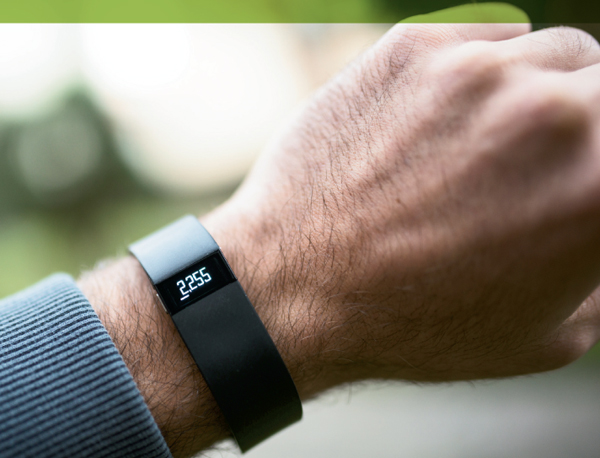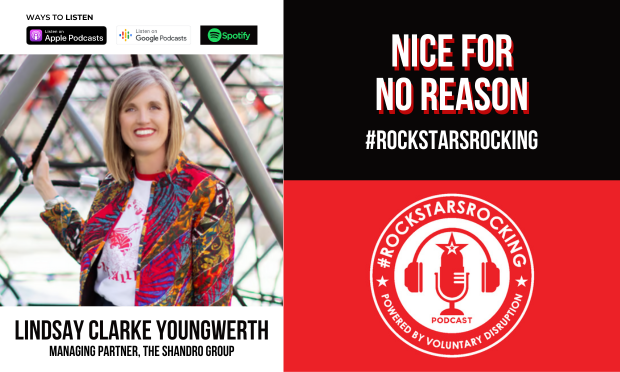Wearable devices that track your activity levels areincreasingly turning up in corporate wellness programs, but willAmericans stick with the new technology, or are these fitnesstrackers a fad?
|That's the big question raised by the rapid rise in the use oftrackers, 17 million of which are expected to be sold this year,according to industry analyst Canalys.
|A recent study found that one in 10 Americans over the age of 18now own a fitness tracker. By 2018, more than 13 million wearableactivity-tracking devices will be integrated into employee wellnessprograms, based on estimates from ABI Research. That's compared tofewer than 200,000 wearable devices used along with corporatewellness plans last year, principal analyst Jonathan Collins toldMobihealth News.
|But with the new technology has come concerns about utilization,cost and privacy. It hasn't helped that Fitbit Inc. was forced torecall one of its trackers after complaints that it caused rashesand blisters.
|Still, these devices are popular, a trend driven by Americans’obsession with analytics. Knowing that you worked out an houryesterday isn't enough. People want to know how many calories theyburned, how high their heart rate rose and how many steps they tookcompared to last week's workouts.
|Fitness trackers can answer these questions and more, and withinteractive apps they can present the data in an appealing andinformative way. Social media lets tracker owners feed theircompetitive urge by comparing results, and, let's be honest,taunting friends and family.
|For employers, the emergence of the relatively inexpensive,lightweight devices gives them a tool to motivate employeesenrolled in wellness programs. Employees now can compete over whotakes the most steps, calories burned and so on, and differentdepartments can gain bragging rights for their latest results.
|Amy McDonough, director of Fitbit Wellness, noted that manyworkers today have relatively sedentary office jobs. She said hercompany's research shows that just wearing a fitness trackermotivates people to get up and move more.
|“By wearing an activity tracker, you’re likely to get about 40percent more active just by putting one on,” she says.
|The devices are sleek and colorful, and come with names such asPolar Loop, Garmin Vivofit, Fitbit Flex, Nike FuelBand and JawboneUp. Prices range from $50 to three times that. Although many takethe form of wristbands, there are clip-on options, armbands, eventrackers that masquerade as jewelry.
|
A Tool for Employee Wellness
|“There are a lot of different applications for the technology,”says Larry Chapman, president and CEO of the Chapman Institute.Chapman, who trains and certifies professionals in the worksitewellness field, sees the activity trackers as a promisingdevelopment. “Anytime you’re using any kind of technology tomeasure fitness activity such as intensity, duration, those areuseful tools.”
|However, Chapman says, in order to be effective, fitnesstrackers need to be incorporated into a wider wellness effort thatincludes feedback, employee education and peer support.
|Chapman lists privacy concerns and cost among the potentialdownsides to fitness tracker use. That said, he notes that thebiggest problem for the technology is that people may simply loseinterest. “It's a problem with virtually all new innovation,”Chapman says. “When you first introduce it, there's a high noveltyeffect. The question is, what happens when this is no longernovel?”
|It's a question that some are seeing as the biggest challengefor the new industry. “There's probably a Fitness Tracker Abandonedin a Junk Drawer Near You,” read a recent headline in Slate. Thearticle quoted a study by Endeavor Partners, a firm that found onein 10 Americans own a fitness tracker, which raised warning flagsabout the high numbers of people abandoning the technology.
|Dan Ledger, principal at Endeavor Partners, says his group'sstudy found that more than half of the U.S. consumers who own anactivity tracker have stopped using it. And a third of consumerswho own one stopped using it within six months of receiving it.
|Ledger says traditional product designers don't necessarily knowmuch about behavioral psychology and what motivates people tochange habits. He says that for younger adults, trackers are asmuch a fashion device as a helpful tool, and the appeal can wearoff.
|But for older Americans who are concerned about their fitnessand may need that extra motivation, the trackers can be useful.
|“For some, they help change habits in a positive way,” he says.“As you peel back the onion, you find that these products aredesigned for a smaller subset of the population than those goingout and buying them. If you’re a serious runner, you’re probablygoing to get much less out of these devices than a 65-year-oldwho's seeking a more active lifestyle.”
|Even with the reality that some abandon the devices, Ledger saysthere is still a lot of potential for fitness trackers and wearabletechnology as a whole. “The industry is getting wiser on how tomake these things more useful,” he says. “The companies that aredoing well ... are targeting people who really are trying to makethe first steps in a healthier lifestyle.”
|Equal Opportunity Fitness
|Megan Spurling is the wellness program manager at SharpHealthCare, a San Diego-based health system with 16,000 employeesworking at four hospitals and more than 20 clinical locations. Shesays the FitBit trackers have been a great success with thecompany's approach to employee wellness, in part because they areso flexible.
|“We have a 24-hour workforce, we’re very diverse, we havelocations across San Diego, and we needed a way to engage people nomatter how they like to pursue physical activity,” she says.“Rather than offer a gym membership, we think this technology ishelpful in creating a way to get people engaged in their fitnesswherever they are.”
|Sharp HealthCare's wellness program uses the trackers inemployee challenges, which can be system-wide or limited tospecific divisions or locations.
|Spurling says that of the 9,000 employees who were given aFitBit tracker as a reward for completing a wellness assessment,more than 5,000 are currently using the devices—and the number isgrowing.
|According to Spurling, employees are becoming more enthusiasticabout using trackers over time, not less. She attributes thecompany's commitment to ongoing wellness education as one reasonfor the program's success.
|Spurling says her company addresses privacy concerns byemploying a system that tracks only step counts—not employeenames—by division and location. Employees can use an onlinedashboard to access much more detailed analytics, but what theyrelease through channels such as social media is up to them.
|As far as the issue of cost, Spurling and McDonough agree thatemployees respond well to programs that give the trackers as areward for completing a wellness task such as a healthassessment.
|McDonough says employers that have the most success with fitnesstrackers are those who are transparent with their approach andsupportive of employees as they use the technology.
|“A device needs to be integrated into the solutions the employeris providing, or on the consumer side, become part of a lifestyle,”she says. “The ecosystem is what's really important.”
Complete your profile to continue reading and get FREE access to BenefitsPRO, part of your ALM digital membership.
Your access to unlimited BenefitsPRO content isn’t changing.
Once you are an ALM digital member, you’ll receive:
- Critical BenefitsPRO information including cutting edge post-reform success strategies, access to educational webcasts and videos, resources from industry leaders, and informative Newsletters.
- Exclusive discounts on ALM, BenefitsPRO magazine and BenefitsPRO.com events
- Access to other award-winning ALM websites including ThinkAdvisor.com and Law.com
Already have an account? Sign In
© 2024 ALM Global, LLC, All Rights Reserved. Request academic re-use from www.copyright.com. All other uses, submit a request to [email protected]. For more information visit Asset & Logo Licensing.








